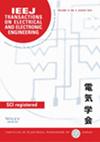求助PDF
{"title":"Influence of Radiative Heat Transfer on Magnetic Rotary Arcs","authors":"Makoto Nobuki, Satoshi Hirayama, Yoshitaka Inui","doi":"10.1002/tee.70019","DOIUrl":null,"url":null,"abstract":"<p>This study examined the influence of radiative heat transfer on magnetic rotary arc plasmas using radiative magnetohydrodynamic numerical simulations. The radiation field was analyzed using the radiative transfer equation, which considers the energy gained by the emission and that lost by the absorption of traveling radiation beams. Numerical simulations were performed using the radiative transfer equation and net emission coefficient models for comparisons. The radiative transfer equation model considers the radiative heat transport from the center to the fringe of the arc column; therefore, the arc column is thicker, and the current density and arc-center temperature inside the arc column are lower. In the net emission coefficient model, the arc column is thinner, and the temperature at the center of the arc becomes excessively high owing to the intense Joule heating. In the vicinity of the current-zero point, the difference in the electrical resistance of the arc column due to the radiation model becomes significant, and the net emission coefficient model overestimates the electrical resistance. This difference in electrical resistance based on the radiation model increases with the applied magnetic flux density. © 2025 Institute of Electrical Engineers of Japan and Wiley Periodicals LLC.</p>","PeriodicalId":13435,"journal":{"name":"IEEJ Transactions on Electrical and Electronic Engineering","volume":"20 8","pages":"1315-1322"},"PeriodicalIF":1.1000,"publicationDate":"2025-04-09","publicationTypes":"Journal Article","fieldsOfStudy":null,"isOpenAccess":false,"openAccessPdf":"","citationCount":"0","resultStr":null,"platform":"Semanticscholar","paperid":null,"PeriodicalName":"IEEJ Transactions on Electrical and Electronic Engineering","FirstCategoryId":"5","ListUrlMain":"https://onlinelibrary.wiley.com/doi/10.1002/tee.70019","RegionNum":4,"RegionCategory":"工程技术","ArticlePicture":[],"TitleCN":null,"AbstractTextCN":null,"PMCID":null,"EPubDate":"","PubModel":"","JCR":"Q4","JCRName":"ENGINEERING, ELECTRICAL & ELECTRONIC","Score":null,"Total":0}
引用次数: 0
引用
批量引用
Abstract
This study examined the influence of radiative heat transfer on magnetic rotary arc plasmas using radiative magnetohydrodynamic numerical simulations. The radiation field was analyzed using the radiative transfer equation, which considers the energy gained by the emission and that lost by the absorption of traveling radiation beams. Numerical simulations were performed using the radiative transfer equation and net emission coefficient models for comparisons. The radiative transfer equation model considers the radiative heat transport from the center to the fringe of the arc column; therefore, the arc column is thicker, and the current density and arc-center temperature inside the arc column are lower. In the net emission coefficient model, the arc column is thinner, and the temperature at the center of the arc becomes excessively high owing to the intense Joule heating. In the vicinity of the current-zero point, the difference in the electrical resistance of the arc column due to the radiation model becomes significant, and the net emission coefficient model overestimates the electrical resistance. This difference in electrical resistance based on the radiation model increases with the applied magnetic flux density. © 2025 Institute of Electrical Engineers of Japan and Wiley Periodicals LLC.
辐射传热对磁旋弧的影响
本文采用辐射磁流体力学数值模拟方法研究了辐射传热对磁旋转电弧等离子体的影响。利用辐射传递方程对辐射场进行了分析,该方程考虑了发射所获得的能量和行进辐射束吸收所损失的能量。采用辐射传递方程和净发射系数模型进行了数值模拟比较。辐射传递方程模型考虑了圆弧柱中心到边缘的辐射热传递;因此弧柱较厚,弧柱内电流密度和弧心温度较低。在净发射系数模型中,弧柱变薄,由于强烈的焦耳加热,弧中心温度变得过高。在电流零点附近,由于辐射模型的影响,弧柱电阻的差异变得显著,净发射系数模型高估了电阻。基于辐射模型的电阻差异随着外加磁通密度的增大而增大。©2025日本电气工程师协会和Wiley期刊有限责任公司。
本文章由计算机程序翻译,如有差异,请以英文原文为准。

 求助内容:
求助内容: 应助结果提醒方式:
应助结果提醒方式:


